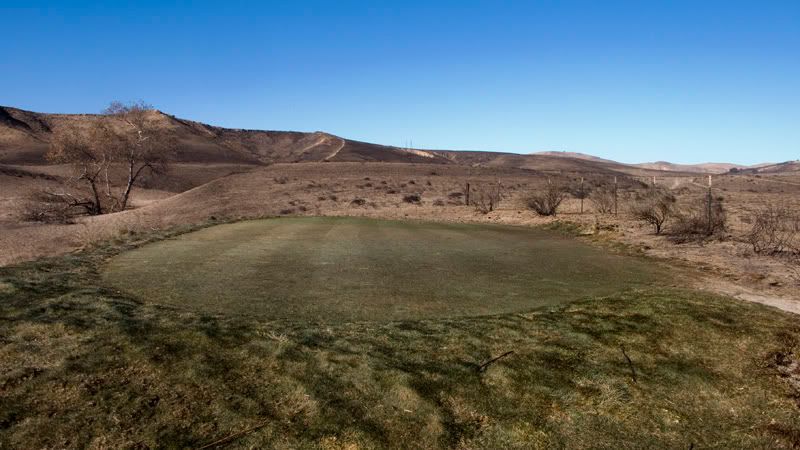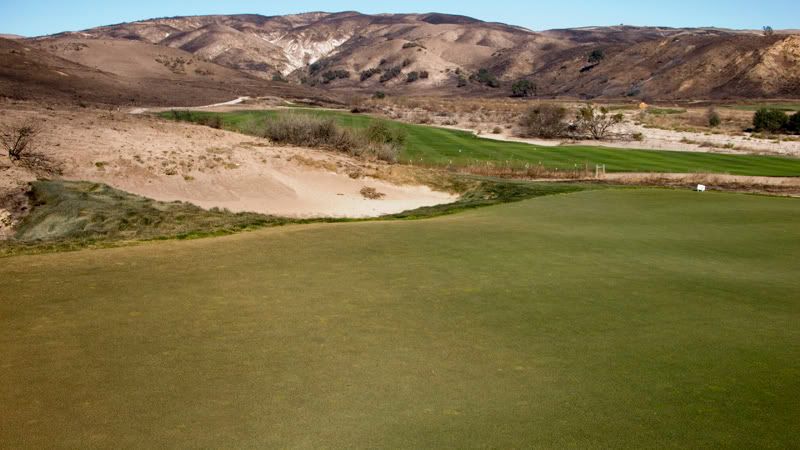I agree with Lynn, except I think he may be downplaying the events leading up to the course damage. In October of 2003 the "Simi Valley Fire" burned over 100,000 acres including the entire watershed above Rustic Canyon. The fire burned the vegetation down to the dirt. The 16th tee looking north.

Another from the 14th fairway looking northeast.

And one from the fifteenth tee.

The next winter, beginning December 26, 2004 and ending about January 11, 2005 two horrendous storms ravaged Southern California. The rain totals varied drastically, but the heaviest rain fell in the coastal mountains, with some areas reportedly receiving over
four feet of rain during this period. The watershed above Rustic goes back about eight or nine miles and roughly 8000+ acres, and there was no established vegetation to slowdown the water or to stop the erosion. What had been a tiny wash - you could jump across it in many spots - became a raging river, and with it came tons of mud, silt, uprooted trees, bridges, and anything else in its path.
_____________________________________________
Kalen,
Could the architects at Rustic Canyon "easily have guessed" that 100,000 acres would burn immediately above the Canyon and then the next winter record storms would drop between two and four feet of rain in the same area over a period of a few weeks? Could they have guessed that the city and county's drainage plan would fail, and that the neighborhood below the course would essentially act as a dam, causing the water to back up over the course?
If they could "easily have guessed" these things, then what should they have done differently? Laid some drain pipe as some have ridiculously suggested? At what increased cost? And what good is drain pipe against a river powerful enough to uproot full grown trees?Don't build the course? That'd be a shame from my perspective. Propose moving 100,000 of cubic yards of dirt in a regional park designated and managed by a nature conservancy? The result would be no course.
While we are pretending that the damage was reasonably foreseeable (as far as I am concerned this definitely takes some heavy duty pretending,) we might as well set aside zoning and environmental concerns. What would the cost of have been to prevent the damage? How does that compare to the cost of building the course as it was, then repairing the damage once done? If we figure in the extremely low probability of such damage occurring, which approach do you think would have made the most sense economically?
It is easy to second guess unforeseen disasters, but even with hindsight I have trouble understanding the logic behind second guessing what was originally done at Rustic. Anyone?